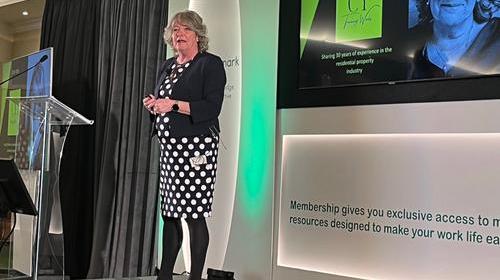
Empathise with your clients
As agents we often enjoy the thrill of the sale, helping somebody to buy their dream home or move into a property for the first time. For a client this can be stressful.
You may have a tenant whose home is being sold and once the sale goes through, they will be given notice to leave the property. Alternatively, a family could be waiting for an exchange of contracts on their new home. Both of these clients don’t know when they are going to move house which could be impacting on their child starting at a new school, or how their commute to work will be affected.
It’s important to imagine what emotions your clients might feel to help you navigate their journey. If you are unsure, give them space to air their concerns during your time with them, and make sure that any issues are addressed before they have the chance to develop.
Five steps to diffuse conflict
Remind yourself that it isn’t personal. Your client is stressed, and you are an easy target for venting their frustrations.
Recognise when it is just abuse, and don’t be hesitant to put the phone down. Take deep breaths and talk to a friend of colleague to talk through what just happened.
Try and listen to detect the genuine cause for the conflict and any feedback. This will help you to learn how to handle things better.
If any positive behaviour is experienced, it’s important to try and reinforce it. Sincerely acknowledge and appreciate those behaviours. For example, say ‘thank you for waiting’, or ‘thank you for talking openly to us about how you are feeling and letting us respond’.
Don’t be tempted to keep it to yourself. It’s important let your team know what the nature of the conflict was and talk it through, from a wellbeing and learning perspective.
Manage misunderstandings
How to improve your customer service
Impress by recognition
Showing clients that we know them can help to diffuse a difficult conversation and establish a rapport. Ways that can make a difference could include:
- Using the person’s name when speaking to them
- Saying that you remember them and describe your last meeting (if you do)
- Commenting on something important that you know or remember about the person to break the ice
- Show the client you know them and understand their position
- Expressing your understanding of the person’s needs and the reason for the conversation
Demonstrate fast action
People value and are impressed with the speed of response so using phrases that emphasise fast action makes them feel reassured:
- I’ll put you straight through
- I can take care of that immediately
- This will speed this along for you
- I can save you some time by…
Show appreciation
A powerful way to encourage desired behaviour is to thank the customer. This could be saying things like 'thank you for waiting' or 'thank you for giving me the opportunity to investigate this matter'.
Provide time-bound solutions
Time is a stress factor in any customer’s experience. Everyone wants to know when to expect news and clients appreciate this. If you don’t know when a problem will be solved, do your best to estimate a conservative resolution time.
The good news here is you’ll either exceed expectations tremendously or have enough time to reset expectations with the customer if necessary. It is better to call up and say they won’t hear back today than leave them to wait by the phone.
Wrap up
Sum up the conversation and set the scene for the future. A successful wrap up is vital and should ideally include:
- Specifying the next steps with time frames
- Confirming the client’s agreement with the next steps
- Asking if there’s anything else they wish to discuss
- Exchanging contact information and endorsing your team if you are absent
- Closing using the person’s name
Dealing with complaints
Great complaint handling increases client loyalty and makes you more likely to be recommended to others. Complaints open up a platform for dialogue about your team, policies and procedures. Do your procedures need updating? Are your team up-to-date on their customer service training?
Research
Look into the client’s history with you. How long has the issue been going on? What are the ins and outs of their relationship with the business? How many times have they asked for something so far? These are all things that help you to understand things from their perspective and help them feel confident that you’re willing to help as you are fully up to speed with what’s been going on. If you don’t have the opportunity to get up to speed beforehand, assure them that you will and take plenty of notes in the meantime.
Be honest
Complaints often don’t reach management and are swept under the carpet. It’s important to openly share what has happened with the wider team. You may find that several other customers have experienced the same issue and this is a chance to resolve it.
Listen and ask questions
Ask the client, how did that make you feel? What would be an acceptable solution for you and I will see how we can get there?
Manage expectations
It’s vital to offer solutions to the client’s issues, but at the same time, be realistic. If you can fix the issue, but it may take time, explain exactly why, and when they can expect it to be resolved. This helps them to be more understanding of your processes.





